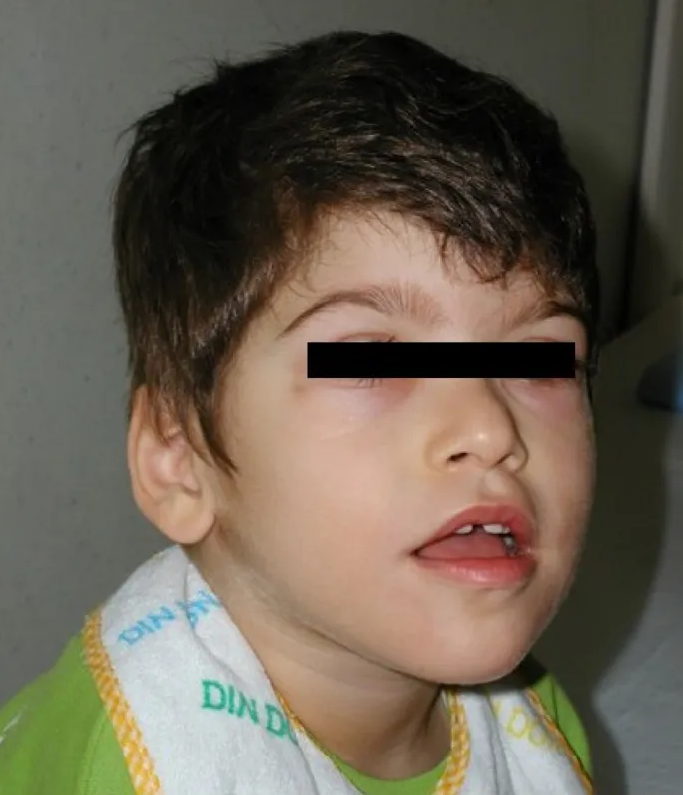Pitt-Hopkins Syndrome

A rare multiple congenital anomalies syndrome characterized by the association of intellectual deficit, characteristic facial morphology and problems of abnormal and irregular breathing.
Epidemiology
Reliable prevalence figures have not been published but based on the number of known affected individuals in the United Kingdom and the Netherlands prevalence is estimated between 1/225 000-300 000
Clinical description
The facial features are recognizable by a narrow forehead, thin lateral eyebrows, wide nasal bridge and ridge, broad nasal tip, prominent midface, full cheeks, wide mouth and thickened or overfolded helices of the ears. Half of the affected individuals have marked and early onset myopia and also squint is relatively common. Psychomotor development is disturbed from early on and severe with hypotonia, late-acquired unstable walking and complete or almost complete absence of language. Malformations of internal organs are uncommon. Severe constipation and gastro-esophageal reflux are common, and in 50% fingers are slender and demonstrate a single transverse palmar crease. Microcephaly is uncommon, and various types of seizures occur in 40% of affected individuals. Breathing disorders can appear during (early) childhood or adolescence and occur only when the patient is awake. Typically, the bouts of hyperventilation come without eliciting factor, have a duration of 2-5 minutes, and are often followed by apnea. Hyperventilation and apnea may also occur independently. Frequency is extremely variable. Underdevelopment of external and internal reproductive organs (small penis, cryptorchidism, labial fusions) occurs regularly in males and females.
Etiology
The syndrome is caused by heterozygous, usually de novo mutations in the TCF4 gene (18q21), coding for a ubiquitous b-HLH transcription factor. Germline or low-grade parental mosaicism has been reported in 2-3% of published cases.
Diagnostic methods
Diagnosis is based on clinical examination, and cytogenetic and molecular studies.
Differential diagnosis
The principal differential diagnosis includes Angelman syndrome, Rett syndrome and Mowat-Wilson syndrome.
Antenatal diagnosis
Detection of the mutation by amniocentesis should be discussed with the parents of an index case during subsequent pregnancies.
Genetic counseling
Transmission is autosomal dominant; however, most cases arise de novo and thus the risk of sibling recurrence is low. The empirical recurrence risk is 2%.
Management and treatment
Management requires a lifelong multidisciplinary approach. Regular follow‐up by a pediatrician, neurologist, psychologist/psychiatrist, and speech therapist will have a major impact. Developmental assessments are needed to tailor medical services to each individual's needs. The use of syndrome‐specific information booklets is recommended for affected families and caregivers; adequate information regarding the breathing disturbances is especially important to avoid mismanagement.
Prognosis
The course of the disease is non-progressive. Longitudinal data are insufficient to determine life expectancy, although survival into adulthood is typical and, at the present, there is no reason that life expectancy is limited. Autonomy is likely to be limited and affected individuals will probably require life-long support from caregivers.